2011 Kawasaki Jet Ski Ultra 300X Review [Video]
New power, new handling equal all-new ride
To the casual industry observer, Kawasaki’s Ultra 300X might be dismissed as just a more potent version of the existing Ultra 260X…and the Ultra 250X that preceded it. No doubt, it is more potent. But hop aboard the 300X for a test ride and you’ll find there’s a lot more than a power upgrade under the seat.
New Attitude
Power? I’ll get to it shortly, but first let’s cover the most surprising aspect of the newly retooled Ultra — its handling. Previously, this was a big-water monster that handled rough water with impunity, but didn’t always feel the most nimble in calm conditions. Crank it into a corner and the hull swept through a turn rather than bite aggressively. In 2011, that rough-water confidence remains, but with it comes a new attitude in flatter conditions.
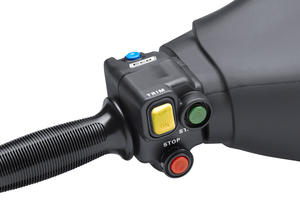 An electric trim feature allows the rider to fine tune the Ultra’s handling characteristics.
An electric trim feature allows the rider to fine tune the Ultra’s handling characteristics.For starters, the Ultra now features electric trim, activated via buttons adjacent to the left handgrip. Come into a corner and you can plant that bow to dig in and hold its line. Further tightening things up is a 20mm shorter steering nozzle, which quickens the boat’s reaction time. In calm water, I was pleasantly surprised by how nimble this large boat felt. Previously, Ultras had often felt super-sized to me in calm conditions. Now, you can carve them like a much smaller model. The hull responds quickly to input at the handlebars, and carves cleanly through a turn with a hint of inside lean.
Still, that big-water prowess remains. Trim that bow up and the Ultra charges across ocean waves, delivering a predictable, solid, and surprisingly dry ride. Hook-up seems to be even better in rough conditions. Kawasaki has gone to a more dramatic top-loader scoop grate to more effectively load the upper reaches of the pump, and pump diameter itself has been increased to 160mm. A new impeller design is also in use, featuring more blade surface area and a revised leading edge that Kawi claims reduces cavitation and further improves the boat’s hook-up. The outlet nozzle has also had a slight reduction in diameter.
Kawasaki claims the boat is now the quickest and fastest PWC in all water conditions. I’ll wait for a head-to-head test to verify that claim, but I don’t doubt it’s now a definite challenger for the crown. What was once a pure rough-water king has now become a flat-water standout.
Get the Flash Player to see this player. |
Giddy Up
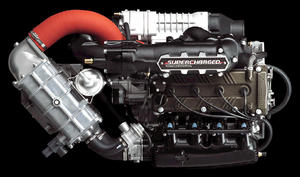 Besides a horsepower boost, the 300X engine features a host of upgrades.
Besides a horsepower boost, the 300X engine features a host of upgrades.Now on to that power…
Three-hundred horsepower once again makes the Ultra the undisputed horsepower king in the PWC market. A new Eaton TVS supercharger design carries the lion’s share of the load. According to Kawi engineers, the previous design produced power more in waves. The new supercharger’s twin, four-lobe rotor design promises to deliver a more consistent flow of air throughout the powerband, smoothing throttle response while boosting performance.
The stats are certainly better. Torque has increased from 177.2 ft-lbs to 201; max thrust has gone from 1585 lbs to 1829; and boost pressure now sits at 17.3 psi compared to the former’s 11. Weight has also been reduced, with about 44 pounds trimmed from the boat’s previous girth. Big enhancements all, and ones you can feel in the craft’s acceleration. While I wasn’t able to measure 0-30mph times during our mostly open-waters test ride at the press intro, acceleration feels indeed stronger from a seat-of-the-pants perspective. Top speed is limited to 67 mph to appease the U.S. Coast Guard, but there’s little doubt the craft will do better.
Numerous mechanical improvements have been made to make certain all this power holds together. While they’re almost too numerous to go into in a mainstream review, here are the highlights. Dedicated cooling lines keep the intercooler running at peak performance. It’s also got a dedicated discharge to improve flushing, and a fogging port for easy maintenance. A new nylon-based intake manifold also eases maintenance concerns, and features a gasket-less O-ring design. You’ll also find new top-end engine components, exhaust system components, electronic throttle, and crankshaft and engine cases. The hull itself has also been lightened, but beefed up in key areas around the bow to increase rigidity as well as overall strength.
Extra, Extra
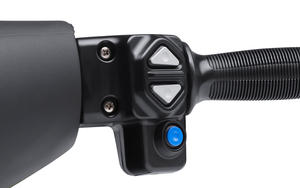 Cruise control and no wake mode are new to Kawasaki and are available at the push of a button.
Cruise control and no wake mode are new to Kawasaki and are available at the push of a button.Kawasaki is also piling on the extras. Moving to electronic throttle means features like cruise control and no-wake mode are now possible. They work similar to competitor’s offerings, enabling the user to set with the push of a button. Cruise control speeds can be adjusted up and down throughout nearly the entire range of the boat’s speed. Kawasaki is also showing off a new ECO mode setting, which reduces fuel consumption by as much as 15%. I was surprised by how aggressively the boat still performed in ECO mode. According to Kawasaki, maintaining the boat’s “sporty” performance was a goal.
Reach for the reverse and you’ll find a new larger, more ergonomic lever. It fits nicely in the hand, but also has a different throw. I found it easier to manipulate when trying to shift in and out of a neutral position around the dock. Handlebars are also now wider to accommodate the new trim and cruise switch assemblies, but it has the added benefit of giving the driver a little more leverage over the craft. Five-position handlebar tilt remains, while the seat has been slimmed slightly to improve comfort. The Ultra also features an upgraded display with something I’ve been asking for for years — larger buttons to activate the various modes. They’re now easy to manipulate with a gloved hand. There’s also an improved latch on the front hood compartment door.
And while the boat may seem similar to the Ultras of old, look closer and you’ll notice subtle appearance changes. Lines are more aggressive, and the front has been restyled to give the boat a more aggressive “personality.” Don’t laugh; you can actually see some mean-looking eyes in there if you look close.
Of course, the familiar attributes remain, like monstrous storage and fuel capacity, a dual-key system that activates a slower speed mode, and off-throttle steering. The latter, in fact, is my only real complaint on the boat. With all the power on hand, you can inadvertently surge forward when not expected if you release the throttle while turning the bars. I’d like to see the response tamed so that an accident-avoidance system didn’t end up actually causing an accident.
Long Live The King
As always, you have to pay to play. Retail price for the 300 is $1,600 more than the 2010 260 model. That’s a significant bump. And yes, chances are that extra power may suck down even more fuel than before, although Kawasaki notes the new supercharger is 28% more efficient than the previous generation.
Still, as I’ve always contended, consumers getting in on the action at this level know what they’re getting into.
And with a legitimate 300 horsepower, a hull that handles like never before, and amenities on par with the competition, the Ultra is letting those consumers get into more than it has ever in the past.
| 2011 Kawasaki Jet Ski Ultra 300X Specs | |
| Length | 132.7 inches |
| Beam | 47.0 inches |
| Curb Weight | 1,040.8 lbs |
| Engine | Four-cylinder DOHC EFI; Supercharged/Intercooled |
| Displacement | 1,498 cc |
| Bore and Stroke | 83mm x 69.2mm |
| Compression Ratio | 8.4:1 |
| Rated Horsepower | 300 |
| Fuel Capacity | 20.6 gal. |
| Combined Stowage Capacity | 60 gal. |
| Colors | Ebony/Lime Green, Ebony/Sunbeam Red |
| Price | $14,499 |
Related Reading
Kawasaki Unveils Biggest Stock Power To Date
We See Kawasaki’s Horsepower King in Action
2010 Kawasaki Jet Ski Ultra 260X Review
2010 Kawasaki Jet Ski Ultra 260LX Review
Get PersonalWatercraft.com in your Inbox!
Like PersonalWatercraft.com on Facebook
Comments
Most Popular
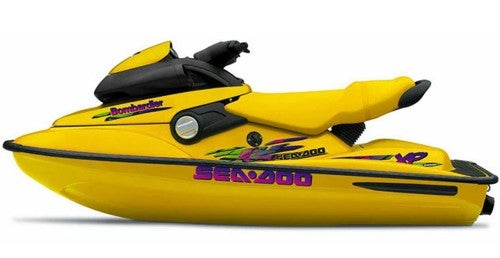
Remembering the Sea-Doo XP
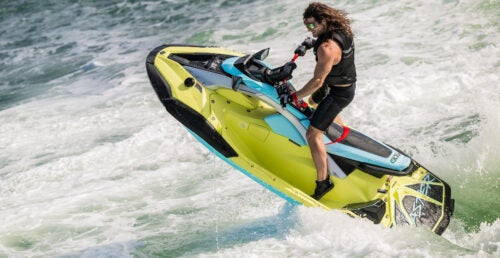
2025 Yamaha JetBlaster PRO 2-Up Review
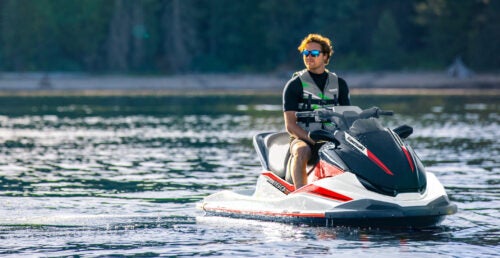
2024 Kawasaki Jet Ski STX 160X Review
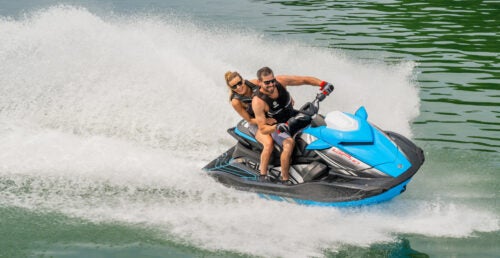
2024 Yamaha GP HO Review
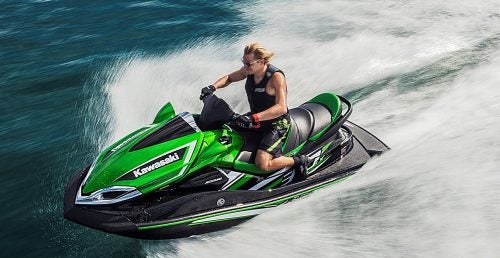
2017 Kawasaki Jet Ski Ultra 310LX Review

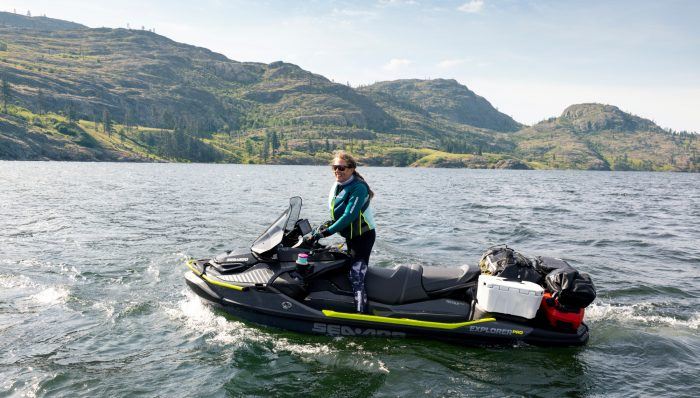
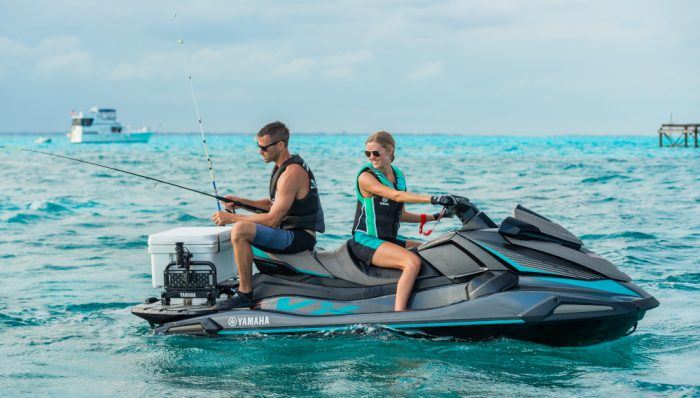
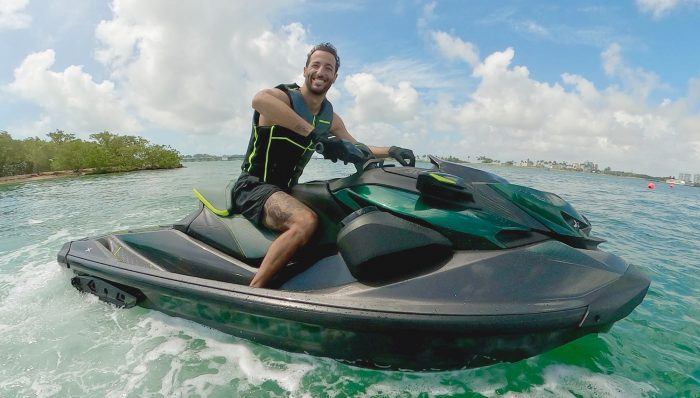

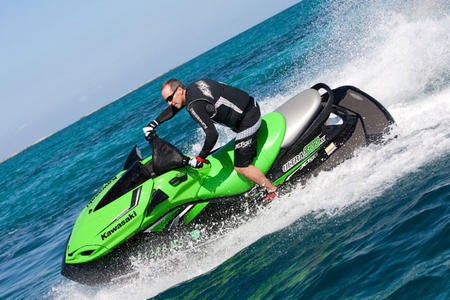
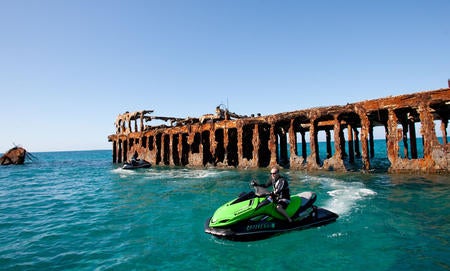
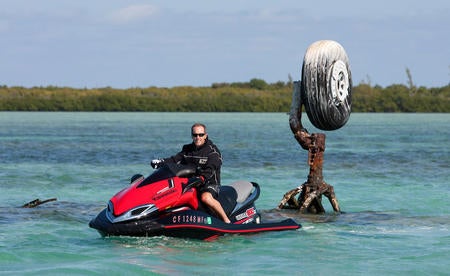



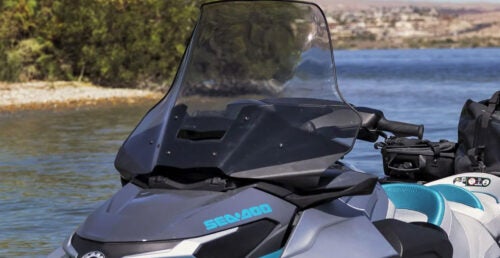
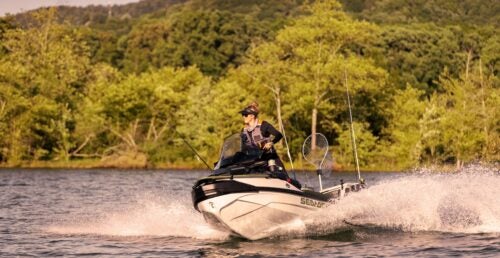


 Your Privacy Choices
Your Privacy Choices